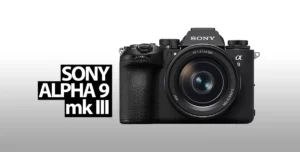Have you ever wondered about the history of photography? About how today’s DSLRs evolved out of their analogue counterparts? Take a look at this interactive history, and scroll through the years.
Early Days in the History of Photography
Beginning around 500 BC, Chinese and Greek philosophers discovered and documented the use of optical devices. As centuries passed, and before the inception of the first camera, scientists were more concerned with ways of developing images rather than with the camera itself. Thus began the exploration of photochemical reactions when in 1727, Johann Heinrich Schulze accidentally discovered that when exposed to light, silver nitrate darkened.
Frenchman Joseph Nicephore Niepce created the oldest surviving photograph sometime around 1826. Working closely with Niepce was Louis Daguerre. Daguerre developed the daguerreotype, which entailed images requiring less than one hour of exposure and did not fade with time.
Be sure to click-scroll the timeline below for the interactive experience
(Temporarily Unavailable)
The focus turned to the camera when in 1840, American Alexander Wolcott became the first to acquire a patent for his version of a camera that was equipped with a concave reflector that created images using specially prepared plates. William Henry Talbot revolutionized image recreation when he invented the first negative in 1841. George Eastman, founder of Eastman Kodak would later introduce the first paper film for cameras in 1884. Four years later, Eastman developed a bellows camera that used rolled film.
The evolution of cameras took another step forward in 1859 when Thomas Sutton invented a panoramic camera that he named after himself. The now-famous leather-encased, box-shaped “Brownie” camera was first made available to the public in 1900. Ur-Leica introduced the first 35mm camera in 1913.
GE enhanced the indoor picture taking process by developing the modern flashbulb in 1927. Meanwhile, researchers kept busy finding ways of incorporating colours directly into film and thanks to Kodak, Kodachrome-colored film emerged on the scene in 1935. The Polaroid Company and its instant picture technology became known to the public in 1948 when the company introduced their first camera. Polaroid went on to create instant-colour film in 1963 and the wildly popular one-step camera in 1973.
Autofocus, Electronic cameras and Digital Imagery
A then-unknown company called Konica introduced the first mass-produced autofocus point-and-shoot camera in 1978, which simplified picture-taking for amateurs. The Canadians became the first to invent the digital camera when the University of Calgary Canada ASI Science Team constructed the Fairchild All-Sky camera in 1981. Fuji was the first to offer a digital camera for public use.
Image development and storage took on a new meaning when Kodak provided consumers with the option of getting photographs printed on traditional film or have them transferred to a photograph CD in 1990. Global High Dynamic Range imaging was introduced in 1993. Sony marketed two cameras in 1997 that automatically saved images on internal floppy discs.
The Beginning of Digital Photography
By the year 2000, Sony began marketing the MVC-CD1000, which saved images on an internal mini disk. While the first digital cameras produced small images, Contax introduced the first digital camera to offer a full 35mm frame along with a CCD sensor in 2002. With the ever-growing popularity of digital cameras and home-based printers among amateur and professional photographers, Polaroid decided to stop manufacturing instant film products in 2008.
In an effort to go one step further and enhance image quality, Canon brought forth the first 18-megapixel camera in 2009. Finally, in 2010, Fuji made available to the public the first digital camera that could create 3D images.
Taking Digital Images to the Next Level
In 2011, Lytro announced the first consumer plenoptic camera which allows users to change the focus of a photograph after it is taken. The Lytro camera was introduced in February of 2012.
Recently, Canon released lenses with STM, short for stepping motor, capability in 2012. STM lenses reduce the noise in lens’ zoom and focus during video recording. STM allows the lens to maintain auto-focus whether in camera or video mode. Additionally, STM lenses tend to be lighter and shorter in design than non-STM types.
Within Canon, the camera company introduced touch shutter function in the low-end DSLR Rebel series beginning with the T4i. Touch shutter allows photographers to shoot photos without pressing down on the shutter button by touching the LCD screen in LiveView mode. However, the function has to be enabled in the menu options.
Since 2011, camera manufacturers introduced built-in wireless technology in cameras and camcorders. Samsung was one of the pioneers to introduce the technology in cameras. Wireless function allows the uploading of photos to the Internet. Time will tell if built-in wireless functions will be seen in DSLR cameras.
The ‘History’ of Photography is Only Yet Beginning
The history of photography is still rather short, but the speed at which changes are occurring these days shows the interest and opportunities that photography has. It will only grow in the future, and will likely never diminish.




